Hi, I’m back!
Today, we’re going to focus on a very interesting topic: teaching mindfulness for children in today’s world. Is it necessary?
If you believe that mindfulness is solely meant for adults or that only adults possess the capability to practice it effectively, then this post is going to change your mind.
While mindfulness brings many benefits into our lives, many of us, when initially embarking on mindfulness practices, often find ourselves struggling with how to control our minds or our thoughts.
So, what if we introduce mindfulness to children at an early age? Could it become second nature to them, seamlessly integrated into their lives? The answer is more profound than that!
Teaching mindfulness for children not only eases their familiarity with these practices for later life but also offers a plethora of additional advantages. Now, let’s begin to understand why and how to teach mindfulness to children effectively.
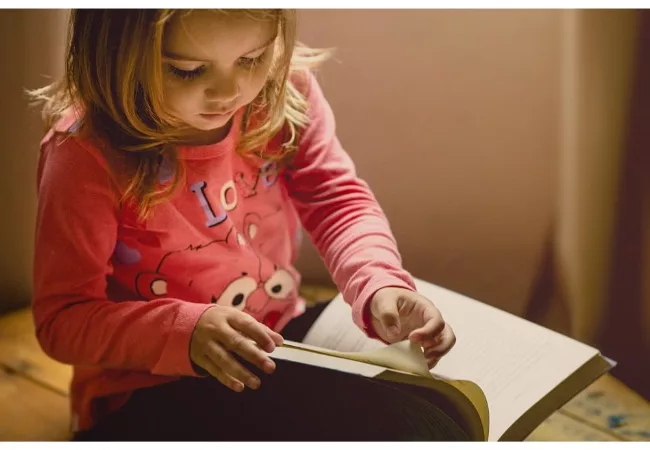
Teaching mindfulness for children in today’s world
Modern Challenges Faced by Children Today
Stress and Anxiety
Academic Stress:
If we have once felt sick of homework in our childhood, then today, kids are probably going through something even worse. Lots of kids are under pressure to do really well in their studies, meet sky-high expectations from their parents and teachers.
This stress can show up in different ways, like getting super nervous before a big test, being afraid of failing, or always wanting to be perfect.
Social Stress
Kids often have to deal with social stuff that can stress them out, like bullies, peer pressure, and trying to fit in.

Family Stuff
Things at home can also be stressful, like parents splitting up, moving to a new place, or money troubles.
Digital Distractions
Screen Time
With all the smartphones, tablets, and computers around, kids are spending more and more time glued to screens.
Too much screen time can lead to problems like not getting enough exercise, messed-up sleep schedules, and not hanging out with friends face-to-face as much.
Information Overload
Being connected to the internet all the time can overwhelm kids.
They’re bombarded with news, social media, and online stuff that might not be right for their age, and it can make them feel confused and stressed.
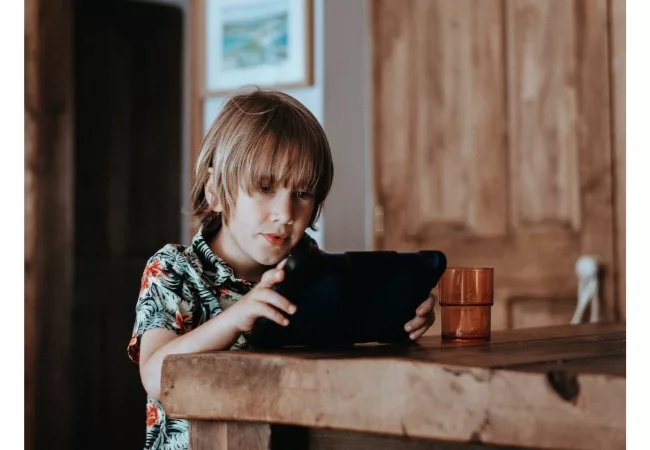
Digital Addictions
Some kids get totally hooked on their gadgets and online games. It can make them act kind of crazy and anxious when they’re not on their screens.
This table provides a clear overview of the estimated prevalence of common mental disorders among children aged 3-17 years in the period of 2016-2019, along with the approximate number of children affected by each disorder.
| Mental Disorder | Estimated Prevalence | Approximate Number |
|---|---|---|
| ADHD | 9.8% | Approximately 6.0 million |
| Anxiety | 9.4% | Approximately 5.8 million |
| Behavior Problems | 8.9% | Approximately 5.5 million |
| Depression | 4.4% | Approximately 2.7 million |
There are many factors that can stress kids out in today’s world. Teaching them mindfulness can help them handle these challenges better and feel more at ease.
When to Start Teaching Mindfulness for Children
Teaching mindfulness to children can begin at a very young age, and the timing can be adapted to a child’s developmental stage and individual needs.
Here are some general guidelines for when to start teaching mindfulness to children:
Preschool Age (Ages 3-5):
At this age, children are capable of simple mindfulness activities. You can introduce basic concepts like deep breathing, mindful listening, and gentle movement through age-appropriate games and activities.
Keep the sessions short and engaging, as young children have limited attention spans. Mindfulness can be integrated into daily routines, such as before naps or bedtime.
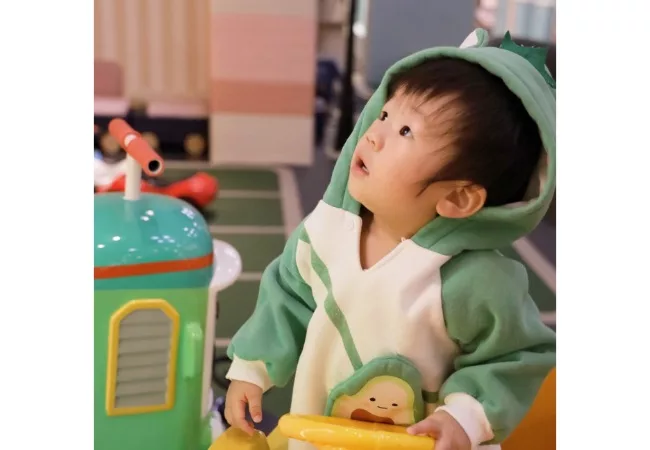
Early Elementary School (Ages 6-8):
As children enter early elementary school, they have a growing capacity for understanding mindfulness. You can use age-appropriate language to explain the concepts.
Encourage mindfulness through playful exercises, stories, and interactive activities. This age group can engage in longer sessions, lasting a few minutes.

Late Elementary School (Ages 9-12):
Children in late elementary school can grasp mindfulness concepts more deeply. You can discuss the science behind mindfulness and its benefits.
Introduce various mindfulness techniques, such as meditation, body scans, and journaling, to provide a broader perspective on mindfulness practice.
Teenagers (Ages 13+):
Teenagers can explore mindfulness in greater depth. You can have more in-depth conversations about the impact of mindfulness on their lives, including stress management, emotional regulation, and decision-making.
Encourage teenagers to choose mindfulness techniques that resonate with them and incorporate mindfulness into their daily routines as a form of self-care.
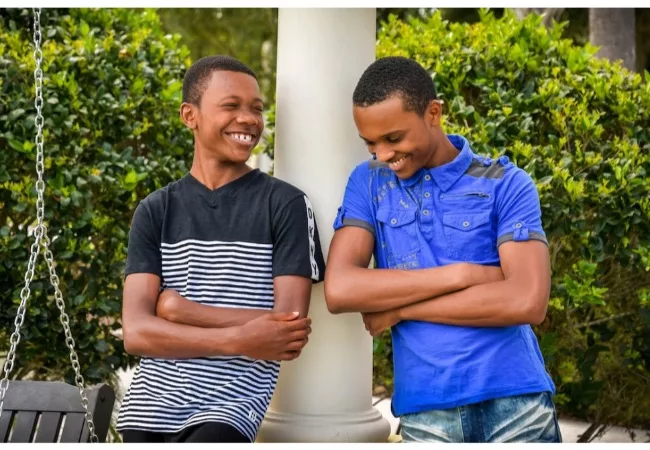
It’s important to note that there’s no specific “right” age to start teaching mindfulness, and flexibility is key. Some children may naturally show interest in mindfulness at an early age, while others may benefit from it later in life when they encounter more stressors and challenges.
Furthermore, moms, dads, caregivers, and teachers can show kids how mindfulness works, no matter how old they are. When you practice mindfulness in your own life, like taking a deep breath when you’re feeling stressed, it can rub off on the kids and get them interested in mindfulness too!
Teaching mindfulness for children: How to?
Defining Mindfulness in a Child-Friendly Way
Defining mindfulness in a child-friendly way is crucial when introducing this concept to kids.
Mindfulness, at its core, is about being fully present in the moment, paying attention to our thoughts and feelings without judgment, and cultivating a sense of awareness.
When explaining mindfulness to children, it’s important to break down these abstract ideas into language and concepts they can grasp and relate to.
Here are some ways to define mindfulness in a child-friendly manner:
Being a Mindful Detective:
You can describe mindfulness as being like a detective for your thoughts and feelings.
Just like detectives pay close attention to clues and details in a case, mindfulness means paying close attention to what’s happening right now, inside and around you.
Mindful Breathing:
One of the simplest ways to introduce mindfulness to children is through mindful breathing.
You can say that it’s like taking a special kind of deep breath where you focus all your attention on the air going in and out of your nose or the rise and fall of your chest or belly. It helps calm your mind and body.
Here is a simple breathing exercise for children:
Thought Clouds:
You can explain that our thoughts are like clouds in the sky. Sometimes, they’re big and fluffy, and sometimes they’re stormy.
Mindfulness is about watching these thought clouds without getting carried away by them.
Mindful Listening:
Mindfulness can also be compared to listening to your favorite song. You pay close attention to each note and word, enjoying the music in the moment. Similarly, mindfulness involves listening to the sounds around you with your full attention.
Being a Quiet Observer:
Tell children that mindfulness is like being a quiet observer of their own thoughts and feelings, as if they were watching a movie. They can see what’s happening without getting too involved in the story.
This is an example of an exercise of mindful looking for children:
Feeling Emotions:
Explain that it’s okay to feel different emotions, just like different colors in a box of crayons. Mindfulness helps you understand your feelings better, so you can choose how to respond to them.
The Mindful Pause:
You can introduce the concept of taking a mindful pause.
This means stopping for a moment, taking a deep breath, and thinking about what you’re doing and how you feel before you react to a situation.
Gratitude Moments:
Teach children that mindfulness can also be about finding things to be thankful for each day, like a cozy bed, a delicious meal, or a sunny day.
Common Concerns and Misconceptions related to teaching mindfulness for children
Misconception: Mindfulness is too complicated for children to understand.
- Response: Mindfulness might seem tricky, but we can make it easy for kids. We can use fun stuff like taking deep breaths, listening carefully, and telling stories to teach them about mindfulness.
Concern: Mindfulness is just another trend, and its benefits are overhyped.
- Response: People might think mindfulness is just a fad, but it’s backed by lots of research. It really does help with stress, anxiety, and making us feel better overall.
Misconception: Teaching mindfulness means pushing a particular belief system or religion on children.
- Response: Nope, mindfulness isn’t about religion. It’s just about being aware and feeling good. We can teach it in a way that respects everyone’s beliefs.

Concern: Mindfulness will make children passive or indifferent.
- Response: Mindfulness isn’t about being passive. It helps kids become more aware and in control of their feelings. It’s like giving them more awareness power to make better choices.
Misconception: Mindfulness is only for children with behavioral or emotional issues.
- Response: Mindfulness is great for all kids, not just those with issues. It helps them focus, handle their emotions, be more caring, and deal with life’s ups and downs.
Concern: Mindfulness takes up too much time and is impractical for busy schedules.
- Response: Mindfulness doesn’t have to be a big time-suck. We can fit in quick mindfulness breaks during the day, like taking a few deep breaths before homework or bedtime.
Misconception: Mindfulness is about suppressing emotions and avoiding negativity.
- Response: Nope, mindfulness lets kids accept all their feelings, even the tough ones. It teaches them to understand emotions and react in healthier ways.

Concern: Children won’t benefit from mindfulness because they have short attention spans.
- Response: We can make mindfulness fun and short to match kids’ attention spans. Quick exercises, games, and cool stories can keep them interested and excited about it.
Remember, teaching mindfulness for children is all about helping them understand their emotions better and deal with stuff in a more effective way.
So, start early, make it fun, and fit it into your daily routine. It’s like giving your kids a toolkit for life – one that helps them handle stress, feel happier, and make smart choices.
And, don’t worry about their short attention spans. We can keep it snappy and interesting with quick exercises, games, and fun stories. Big changes are made from small ones every day.






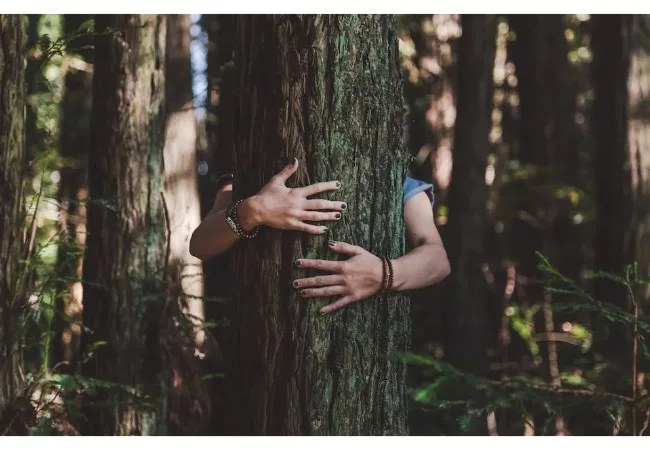
Mindfulness is a subject near and dear to my heart so I was immediately attracted to this article when it popped up on my Google search page. Your depiction of situations that young children must deal with today that I certainly did not have to (nor did most of my generation I think) brings home the need for instilling mindfulness starting at a young age to lessen that stress brings home the need for it.
Of course, teaching mindfulness to children is not the same process as one might use with adults. I really have not dealt with the younger generations when it comes to mindfulness but as a grandfather now, I can see the need to add this knowledge to my repertoire of skills so I can offer them some help.
In that regard, the tips and advice are much appreciated, and I have bookmarked the site so I can come back and read through it a few more times. I do not want to mess this up by not having a full set of tools to bring up the subject and then provide some good guidance.
The ones that resonate the most for me include the detective angle, the mindful listening angle, and the gratitude moments angle. All these are easily understood and can be implemented by the kids. Starting at a young age will instill the use of them as they grow into young adults and help them deal with all the stresses they face these days. Thanks for an excellent and useful article!
.
I couldn’t agree more! Mindfulness is indeed a valuable skill, especially in today’s fast-paced world where children face unique challenges. It’s heartwarming to hear that you’re interested in introducing mindfulness to your grandchildren.
Thank you for sharing your thoughts and insights.